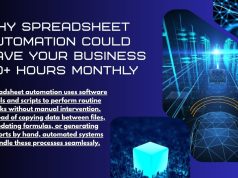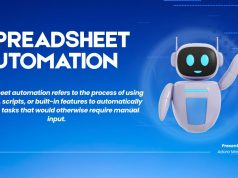In today’s digital landscape, manual data entry remains one of the most time-consuming and error-prone business processes. Whether you’re extracting information from invoices, forms, receipts, or any text-based documents, the traditional copy-paste method drains resources and introduces costly mistakes. This comprehensive guide explores how to effectively automate data entry from text sources, helping you transform your workflow and reclaim valuable time.
Understanding the Data Entry Challenge
Before diving into automation solutions, it’s important to recognize the scope of the problem. Traditional manual data entry typically involves:
- Reading information from physical or digital documents
- Interpreting the relevant data points
- Typing or copying that information into destination systems
- Verifying accuracy through proofreading or validation
This process becomes exponentially more complex when dealing with inconsistent formats, handwritten text, or large volumes of documents. According to a study by Smartsheet, knowledge workers spend approximately 4.5 hours per week on repetitive data tasks that could be automated.
The Evolution of Text-Based Data Entry Automation
The journey from manual data entry to intelligent automation has evolved significantly over recent years:
1. Basic OCR Technology
Optical Character Recognition (OCR) represented the first major breakthrough in automating data extraction from text. Early OCR systems could convert scanned documents into machine-readable text but struggled with varied fonts, layouts, and image quality.
2. Template-Based Extraction
The next evolution introduced template-based systems that could identify specific fields within standardized documents. These systems work well for uniform documents like standard forms but fall short when processing varied layouts.
3. Intelligent Document Processing (IDP)
Modern automation employs advanced AI and machine learning to understand document context and structure without relying on rigid templates. This technology can identify relevant information even when document formats change substantially.
Core Technologies Powering Text-Based Data Entry Automation
Several technologies work together to make efficient data entry automation possible:
Optical Character Recognition (OCR)
Modern OCR engines like ABBYY FineReader have advanced significantly, now capable of recognizing text with over 99% accuracy under optimal conditions. These systems can:
- Process multiple languages and character sets
- Handle various font styles and sizes
- Recognize both printed and handwritten text
- Maintain text formatting and layout
Natural Language Processing (NLP)
NLP algorithms help automation systems understand the context and meaning behind the recognized text. This contextual understanding is crucial for correctly identifying and categorizing information.
For example, NLP can help determine whether “5/10/2023” represents a date, fraction, or other numerical data based on surrounding text and document type.
Machine Learning (ML)
Machine learning enables automation systems to improve over time by:
- Learning from corrections and adjustments
- Identifying patterns specific to your business documents
- Adapting to new document types without explicit programming
- Increasing accuracy through continuous training
As a Data Entry Ninja expert would confirm, these intelligent systems significantly outperform traditional methods when properly implemented and trained.
Step-by-Step Guide to Automating Text-Based Data Entry
Implementing data entry automation requires careful planning and execution. Follow these steps for successful implementation:
1. Document and Analyze Your Current Process
Before selecting automation tools, thoroughly document your existing workflow:
- Identify all document types you process
- Map out how information flows between systems
- Note specific validation rules and business logic
- Measure current processing times and error rates
This analysis provides crucial benchmarks and requirements for your automation solution.
2. Data Classification and Preparation
Organize your document types into categories based on:
- Format similarities (invoices, receipts, forms)
- Information complexity
- Processing priority
- Required accuracy levels
Proper classification ensures you choose appropriate automation approaches for each document type.
3. Select Appropriate Automation Tools
Based on your analysis, choose tools that match your specific requirements. Options include:
For Structured Documents
Structured documents like standardized forms work well with template-based extraction tools such as:
- Form Stack
- Declares
- Para script Fortran
For Semi-Structured Documents
Business documents like invoices and purchase orders typically require more intelligent processing:
- Rossum
- Hyper science
- ABBYY Flex Capture
For Unstructured Documents
Free-form text documents like contracts or letters need advanced AI capabilities:
- Amazon Extract
- Google Document AI
- Microsoft Azure Form Recognizer
4. Integration and Workflow Design
Connect your automation tools with destination systems through:
- Direct API integrations
- Middleware platforms like Zapier or Make (formerly Integrate)
- Robotic Process Automation (RPA) tools
- Custom integration development
Design workflows that handle exceptions gracefully, allowing human intervention only when necessary.
5. Testing and Validation
Thoroughly test your automation solution with:
- Sample documents representing all variations
- Edge cases that might challenge the system
- Volume testing to ensure scalability
- Side-by-side comparison with manual processing
Set accuracy thresholds and establish quality control measures before full deployment.
6. Training and Change Management
Prepare your team for the new automated workflow:
- Provide training on exception handling
- Explain how to monitor system performance
- Establish procedures for reporting issues
- Communicate the benefits of the new process
Advanced Strategies for Text-Based Data Entry Automation
Once you’ve implemented basic automation, consider these advanced strategies:
Hybrid Processing Models
Combine multiple approaches for optimal results:
- Use template-based extraction for highly structured sections
- Apply AI-based processing for variable content
- Implement human-in-the-loop verification for critical data points
Continuous Learning Systems
Implement feedback loops where:
- Human corrections train the system
- Performance analytics identify improvement opportunities
- Document patterns inform automation refinements
Pre-Processing Enhancement
Improve document quality before processing:
- Image enhancement algorithms for poor-quality scans
- DE skewing and DE speckling routines
- Format standardization when possible
Real-World Applications and Success Stories
Finance Department Transformation
A mid-sized manufacturing company automated invoice processing, reducing processing time from 15 minutes per invoice to under 1 minute while improving accuracy from 92% to 99.5%.
Key components of their solution included:
- AI-powered invoice recognition
- Automatic three-way matching (PO, receipt, invoice)
- Integration with their ERP system
- Exception workflows for non-standard cases
Healthcare Records Management
A healthcare provider automated patient intake form processing, achieving:
- 85% reduction in manual data entry
- Virtual elimination of transcription errors
- Faster patient registration times
- Improved HIPAA compliance through reduced human access
Logistics Document Processing
A logistics company automated bill of lading and customs documentation processing:
- Processing time decreased from days to minutes
- Staff redeployed to higher-value tasks
- Error rates reduced by 93%
- Customer satisfaction scores increased significantly
Common Challenges and Solutions
Despite its benefits, automating data entry from text presents certain challenges:
Handling Poor Quality Documents
Challenge: Faded text, low-resolution scans, or handwritten notes can reduce OCR accuracy.
Solution: Implement image pre-processing routines and consider specialized handwriting recognition tools for problematic documents.
Managing Varied Document Formats
Challenge: Inconsistent layouts and formats can confuse template-based systems.
Solution: Use AI-powered adaptive recognition that learns from document variations rather than rigid templates.
Integration with Legacy Systems
Challenge: Older systems may lack modern APIs for automation integration.
Solution: Consider RPA tools that can interact with legacy systems through their user interfaces when API integration isn’t possible.
Handling Exceptions
Challenge: Some documents will inevitably require human intervention.
Solution: Design intelligent exception handling with clear escalation paths and user-friendly verification interfaces.
Measuring ROI and Performance
To justify and optimize your automation investment, track these key metrics:
Time Savings
- Average processing time per document
- Total hours saved per month
- Staff time redirected to value-added activities
Accuracy Improvements
- Error rate before and after automation
- Cost savings from error reduction
- Customer satisfaction improvements
Financial Impact
- Labor cost savings
- Faster processing of financial documents
- Earlier capture of discounts
- Reduced penalties from processing delays
Future Trends in Text-Based Data Automation
The field continues to evolve rapidly, with several emerging trends:
AI-Powered Contextual Understanding
Next-generation systems will better understand document intent and context, moving beyond simple data extraction to comprehensive document comprehension.
Zero-Shot Learning
Future automation tools will require minimal training, capable of processing new document types without extensive configuration or examples.
Embedded Automation
Rather than standalone solutions, expect to see data extraction capabilities embedded directly within business applications and workflows.
Enhanced Mobile Capture
Advanced mobile document capture will enable real-time processing from anywhere, further streamlining operations.
Conclusion
Automating data entry from text documents represents one of the most impactful digital transformation initiatives for businesses of all sizes. By implementing the right combination of OCR, AI, and workflow automation, organizations can dramatically reduce processing times, minimize errors, and free valuable human resources for more strategic work.
The journey to automation success requires careful planning, appropriate technology selection, and thoughtful implementation. Start with well-defined processes, choose tools matched to your specific document types, and build comprehensive workflows that handle both standard processing and exceptions.
For personalized guidance on optimizing your specific data entry processes, contact our team of data automation specialists who can help design a custom solution for your unique requirements.
By embracing these modern automation approaches, your organization can transform data entry from a necessary burden into a competitive advantage.










